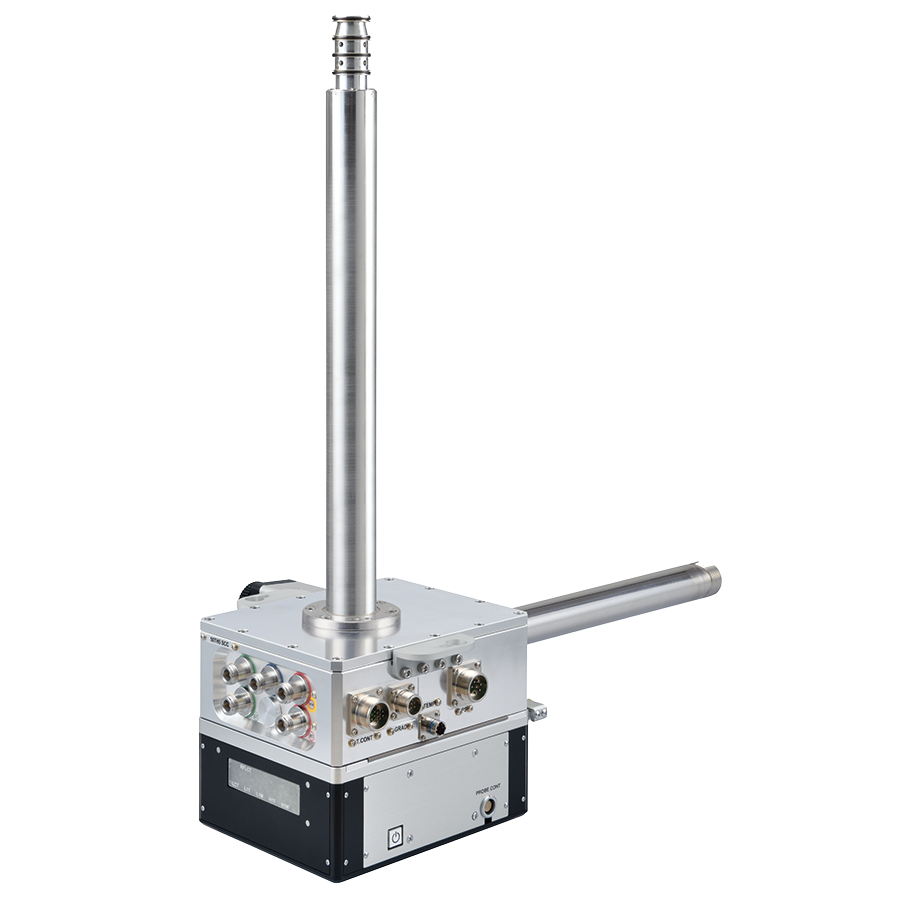The detection coil and preamplifier are cooled to cryogenic temperature to reduce thermal noise to an extremely low level, enabling measurement with sensitivity several times higher than that of conventional room temperature probes. A wide variety of continuous measurements can be performed in combination with the auto-tuning unit.
Following two line-ups are available with the SuperCOOL probe.
・Open type (SCO: SuperCOOL Open)
・Circulating typesystem (SCC: SuperCOOL Closed)
All probes are capable of controlling the sample temperature over a very wide range from (-40℃ to + 150℃). The Probe Lifer and Probe Arm are available as optional accessories to alleviate probe exchange. By using these supporting units, it is also possible to use other probes such as solid probe.
Features
SuperCOOL probe circulating type system
The SuperCOOL probe system is a system to reduce thermal noise, enabling measurement with high sensitivity, which is similar with the UltraCOOL probe system. As it circulates cooled helium gas to cool the electric circuit, the running cost is relatively low and it can obtain three times higher 13C sensitivity than with the room temperature probes. Since it supports multiple nuclei measurement, it can obtain NMR signals with higher sensitivity, with the same feel of use as conventional room temperature probes. In addition, sample tube size is selectable from 5mm or 10mm.The circulating type system does not require replenishment of the coolant*1, same feel of use with the room temperature probes can be obtained.
*1: Only during continuous operation. After stoppage, replenishing will be required.
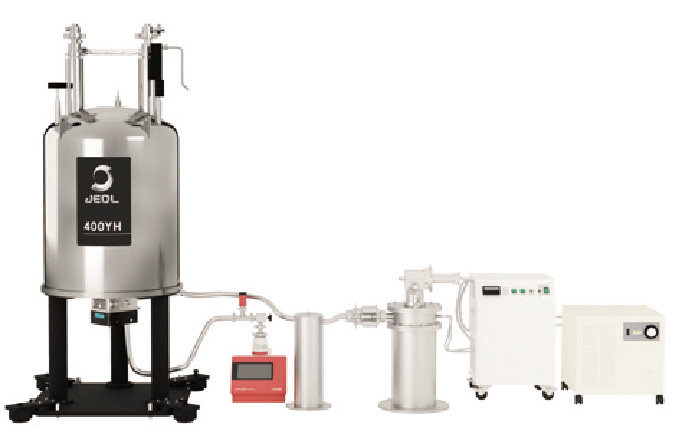
400 MHz SuperCOOL probe circulating type system
SuperCOOL probe open type system
The SuperCOOL probe open type system cools the electric circuit by spraying liquid nitrogen from a dewar bottle. Therefore, a periodic replenishment of liquid nitrogen is required. This is a probe system providing sensitivity similar to the SuperCOOL probe circulating type system with low running costs. Replenishing liquid nitrogen is possible even during measurement. 。
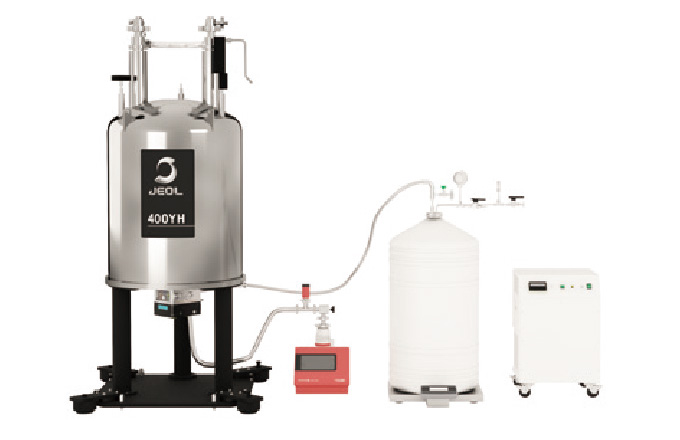
400 MHz SuperCOOL probe open type system
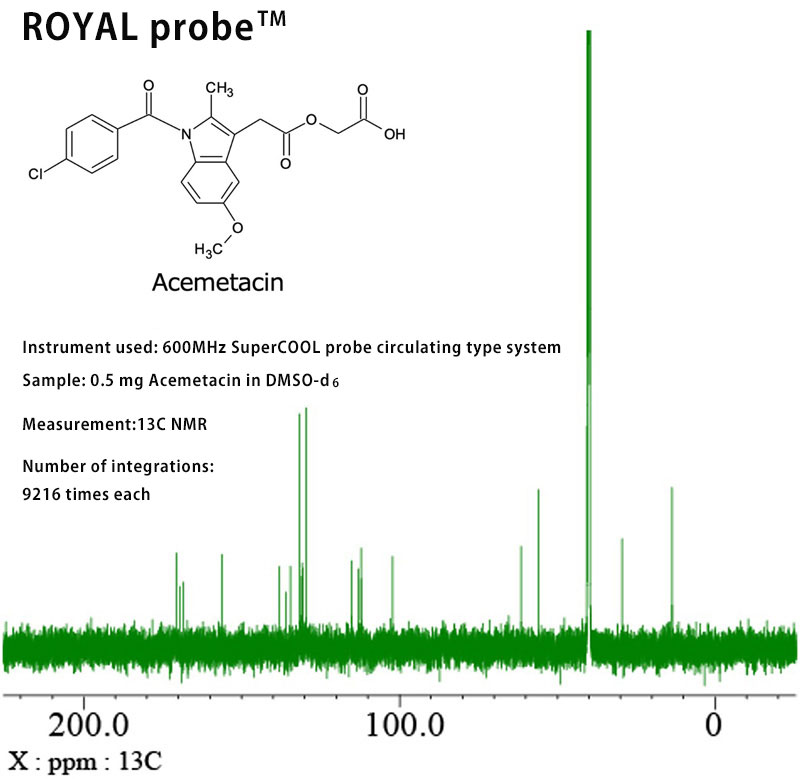
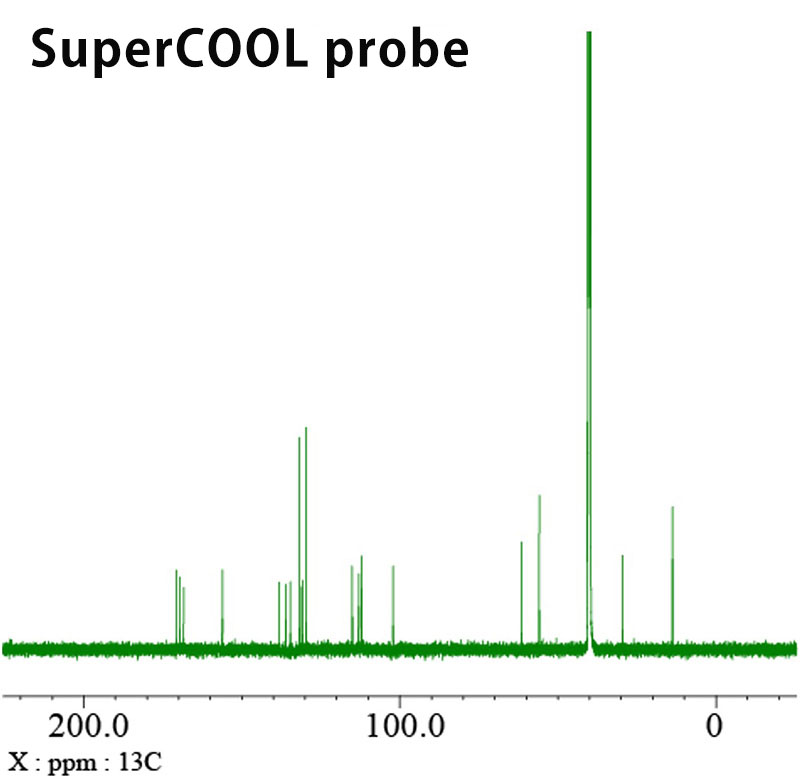
Installation examples
SuperCOOL probe circulating type system
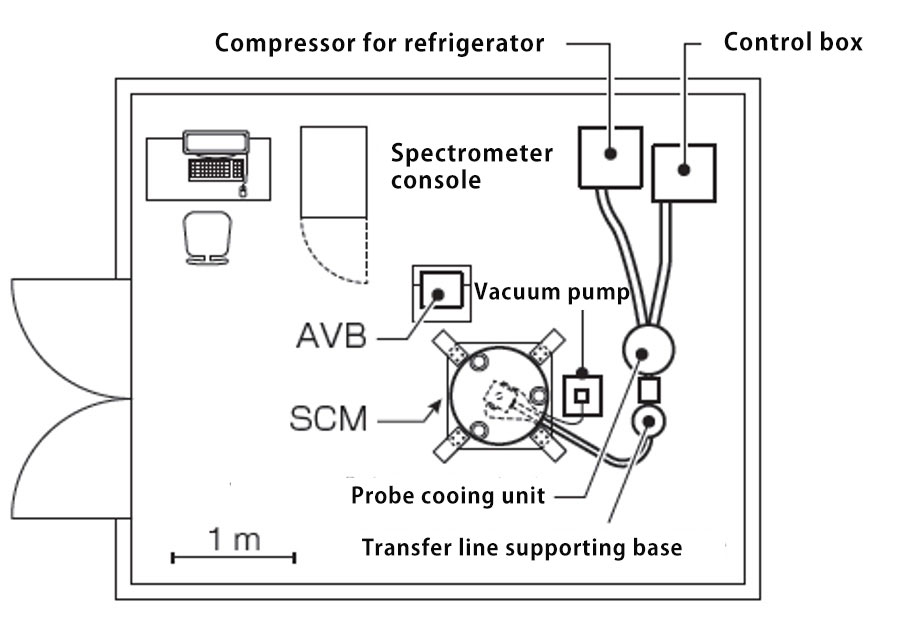
SuperCOOL probe open type system
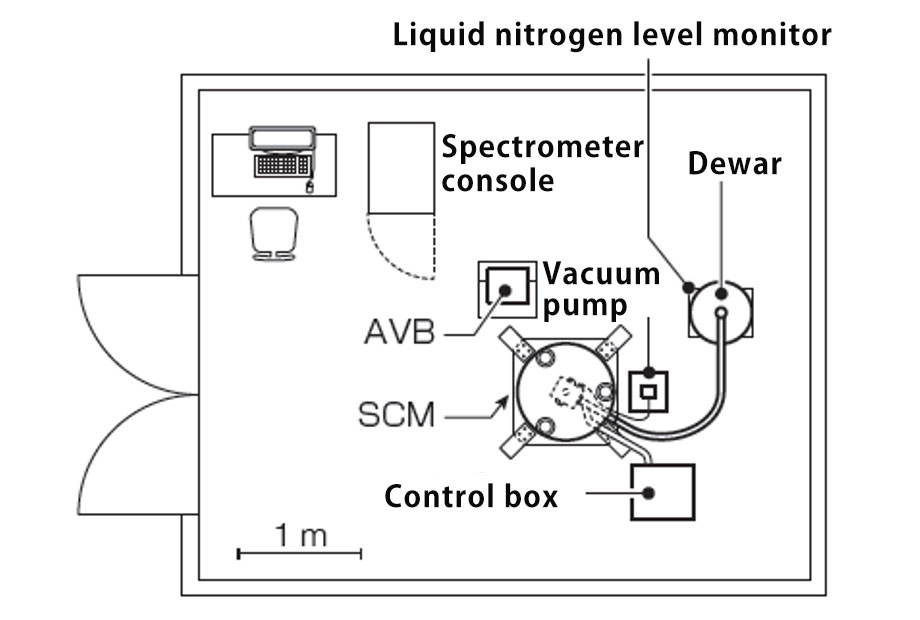
29Si Background-Free
JEOL cryogenic probes greatly reduce the 29Si background signal coming from the probe components. A background-free measurement is available for glass materials. The spectra below shows that the background signal was greatly reduced without the sample tube, demonstrating that most of the background signals came from the sample tube.
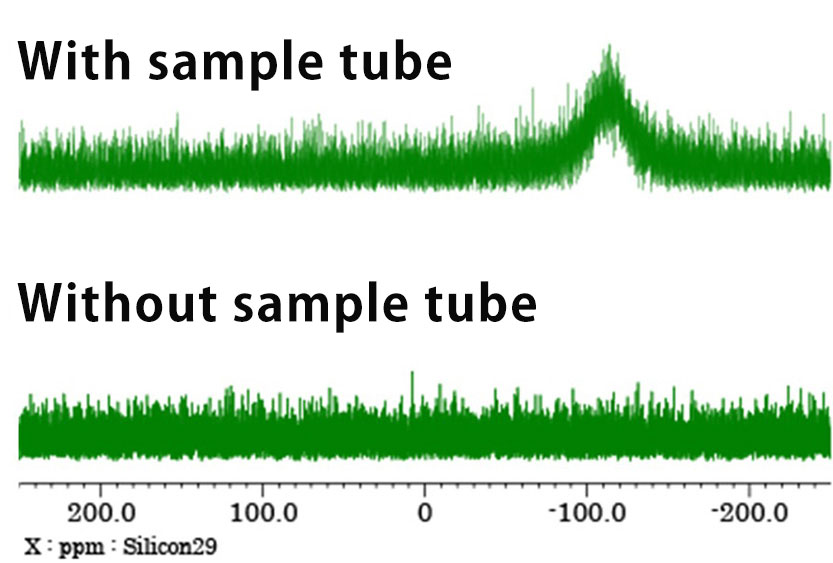
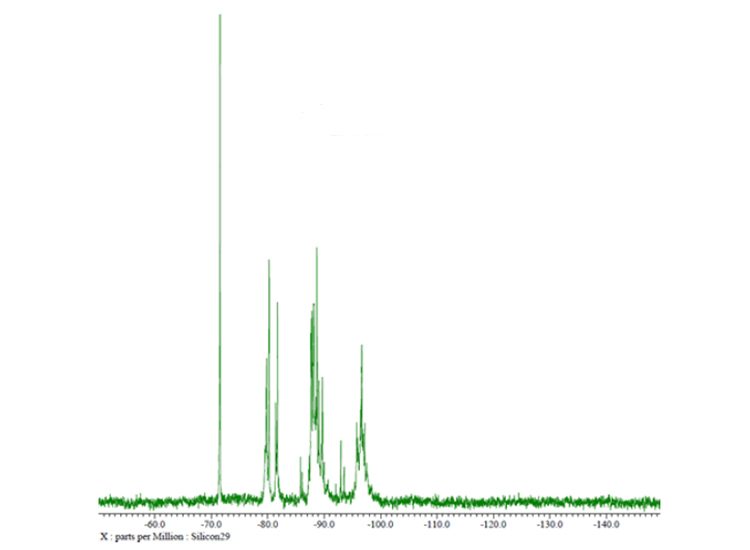
29Si NMR spectrum of 10wt% water glass/D2O
29Si NMR spectra measured by the SuperCOOL probe with a 5 mm PTFE sample tube. As no background signal appears around -100 ppm, signals on the high magnetic field side are clearly confirmed.
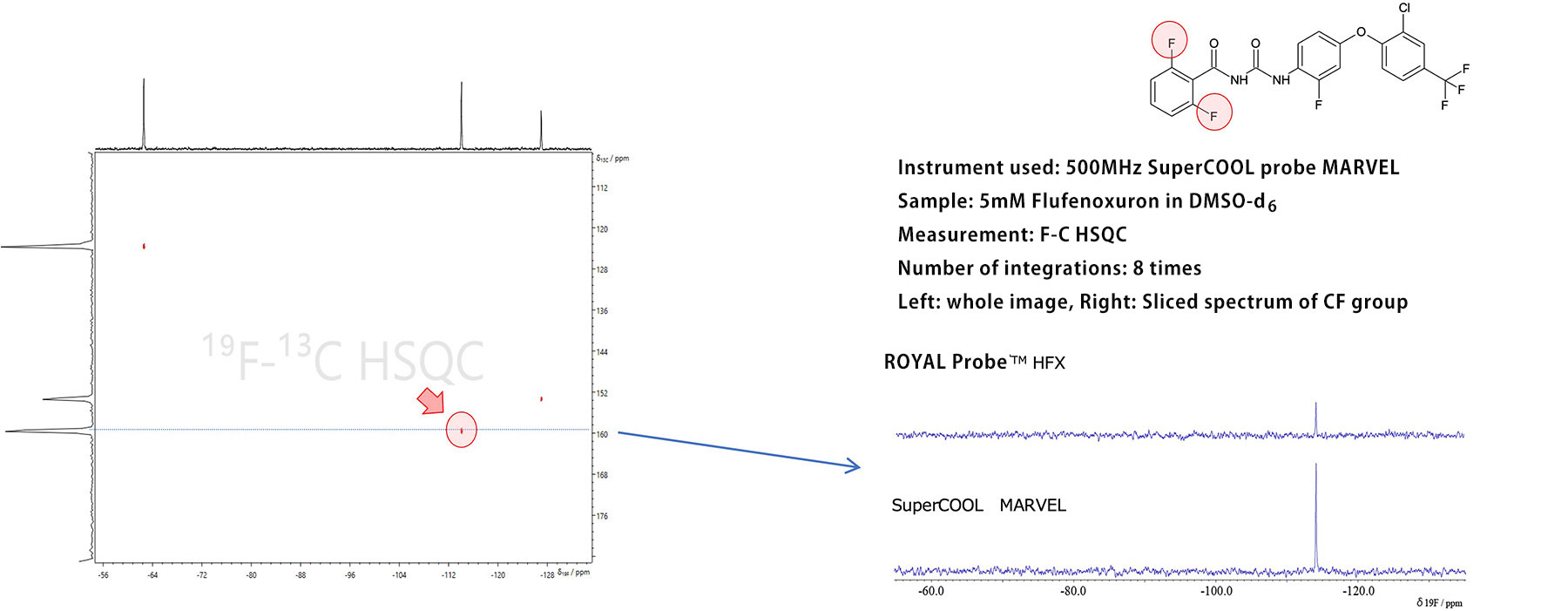
HSQC measurement, a 2D NMR of 19F-13C at low concentration of 5mM is possible.Comparison of sliced spectra shows that it can detect signals with a higher sensitivity than that of the ROYALPROBETM.
Probe Arm and Probe Lifter
Cryogenic probes cannot be raised or lowered by hand in a cooled state due to safety concerns, and hence it might be necessary to warm up cryogenic probes to room temperature before manipulating them. However, you can replace the UltraCOOL probe or SuperCOOL probe in the cooled state by using the probe arm or lifter. Also, though the UltraCOOL and SuperCOOL probes are heavier than room temperature probes due to their nature, they can be easily exchanged using the Probe Arm or the Probe Lifter.
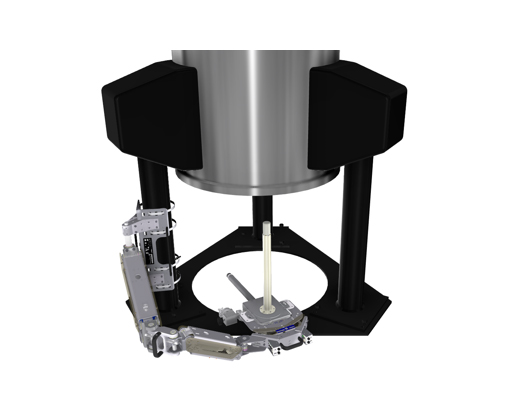
Probe Arm
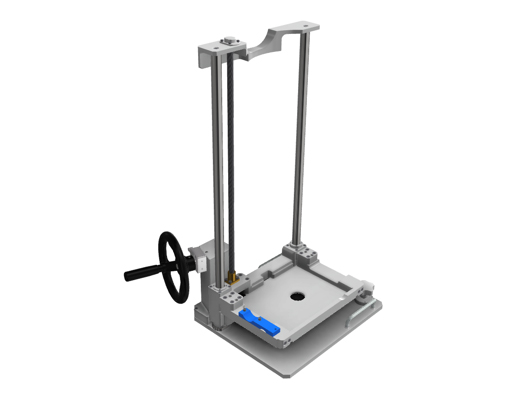
Probe Lifter
◆Click the play button in the above box, and the video will start.(44 sec). ◆
Development Secrets
To a New World: Cryogenic probes - The development of “UltraCOOL” & “SuperCOOL” probes
Catalogue Download
Application
SuperCOOL probe applications
High sensitivity, low priced, energy saving probe for speedy data acquisition SuperCOOL Probe
Are you a medical professional or personnel engaged in medical care?
No
Please be reminded that these pages are not intended to provide the general public with information about the products.

